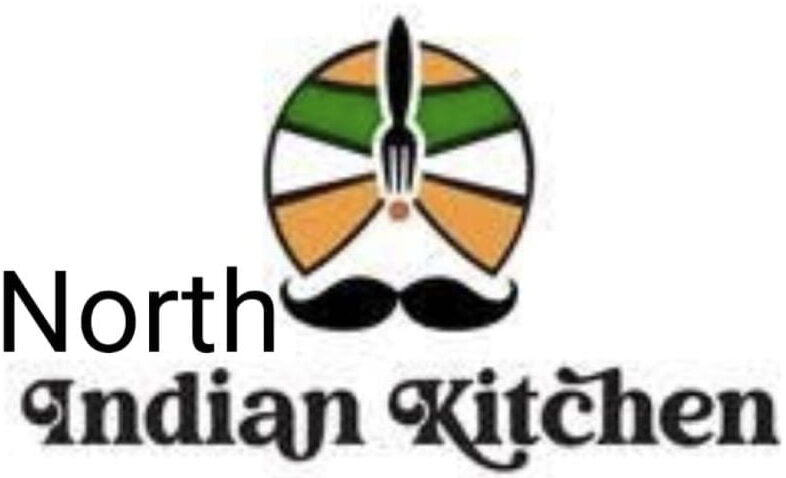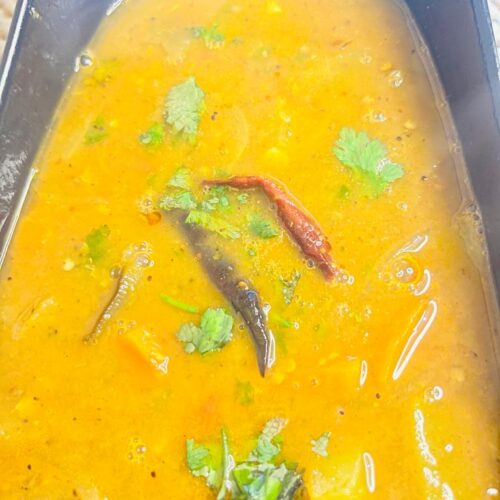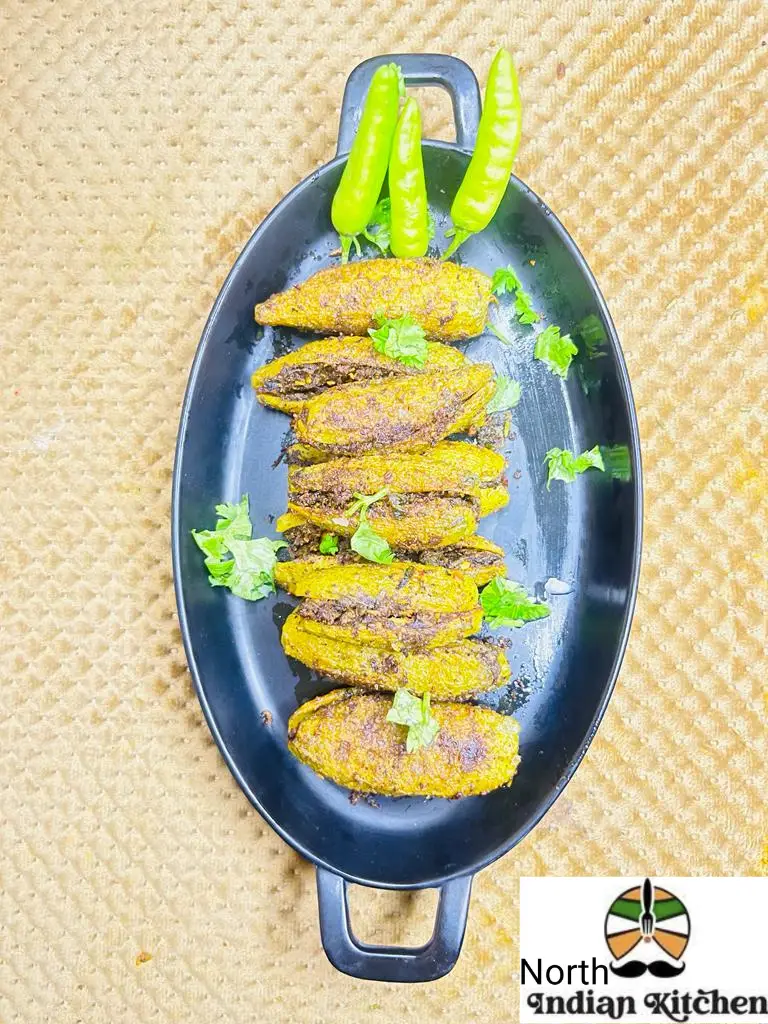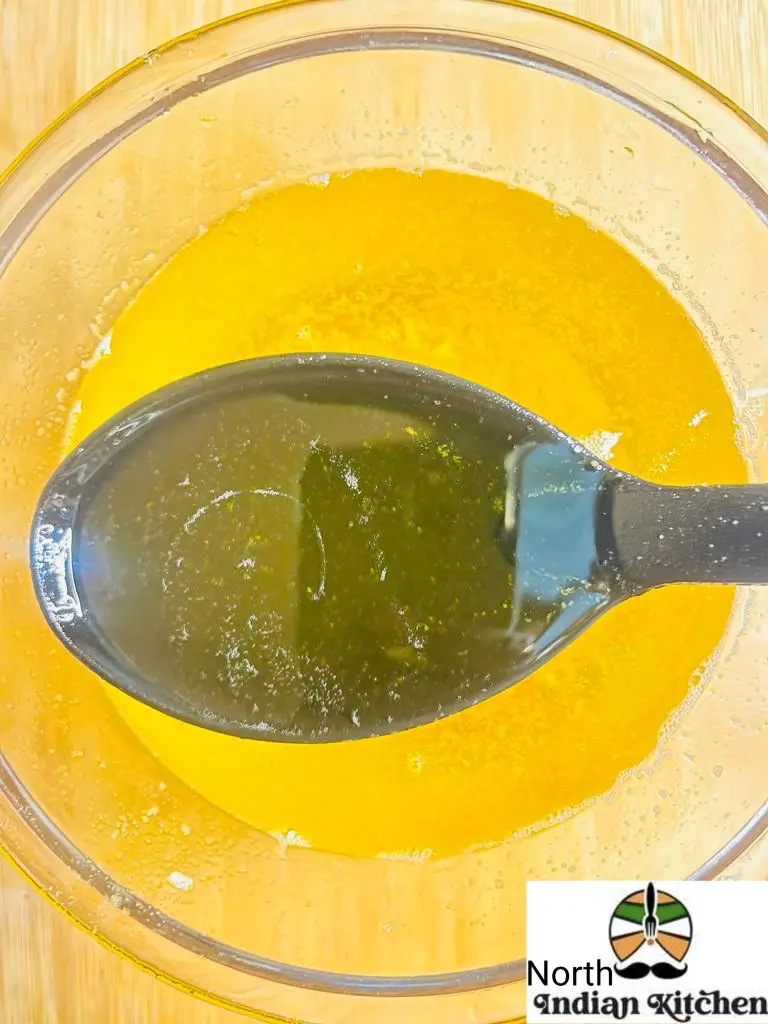Easy South Indian Sambar Recipe | Mix Vegetable South Indian Sambar
Sambar is a popular South Indian dish that’s made with lentils, vegetables, and a flavorful spice blend. It’s a delicious and nutritious dish that’s enjoyed by people all over India and beyond. I’ll cover the history of sambar, its ingredients, preparation, and some tips for making the perfect sambar at home.
Sambar has its origins in South India and is a quintessential part of the region’s cuisine. It’s believed that sambar was originally made without any vegetables, and the addition of vegetables came later. The dish has evolved over the years, with different regions and communities adding their own unique twists to the recipe.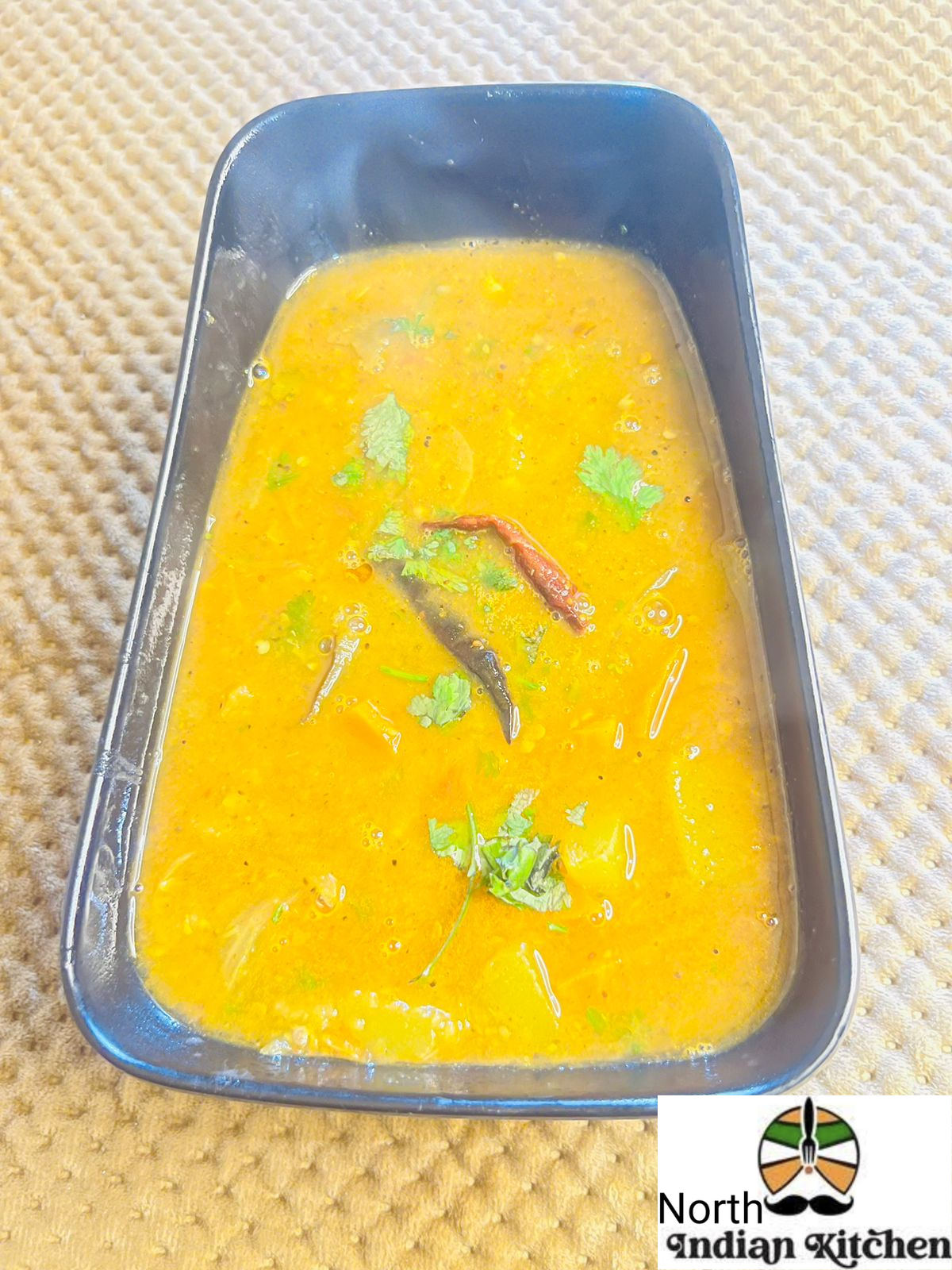
Ingredients we want to build blocks of Sambar
- Lentils: To make sambar, you’ll need a type of lentil called toor dal (pigeon pea lentils). These lentils are cooked until soft and then mashed to form the base of the dish.
- Vegetables: Sambar is typically made with a variety of vegetables such as drumsticks, carrots, eggplant, okra, and pumpkin. The choice of vegetables can vary based on personal preferences and availability.
- Tamarind: Tamarind pulp is used to give sambar its signature tangy flavor. It’s a crucial ingredient that balances out the richness of the lentils and the vegetables.
- Sambar Powder: This is a spice blend that gives sambar its distinctive flavor. It’s made from various spices like coriander seeds, fenugreek seeds, cumin seeds, and dried red chilies, which are roasted and ground together.
- Asafoetida (Hing): A pinch of asafoetida is added to sambar for its unique flavor and digestive properties.
- Curry Leaves: Curry leaves are commonly used in South Indian cooking to add aroma and flavor.
- Mustard Seeds and Cumin Seeds: These are used for tempering the sambar and imparting a fragrant aroma.
- Oil or Ghee: For tempering and sautéing the spices and vegetables.
Preparation of Sambar Step by Step with Pics
- Soak 150gm toor dal in water for.
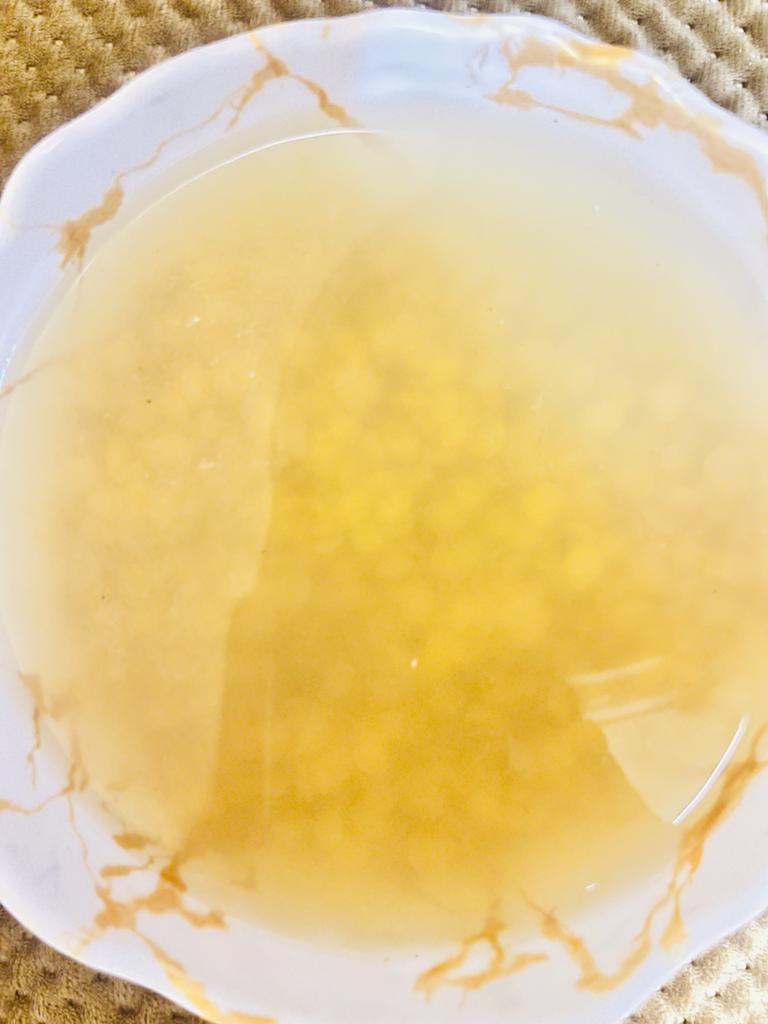
- Transfer dal pressure cooker for boil. Add water as per required.
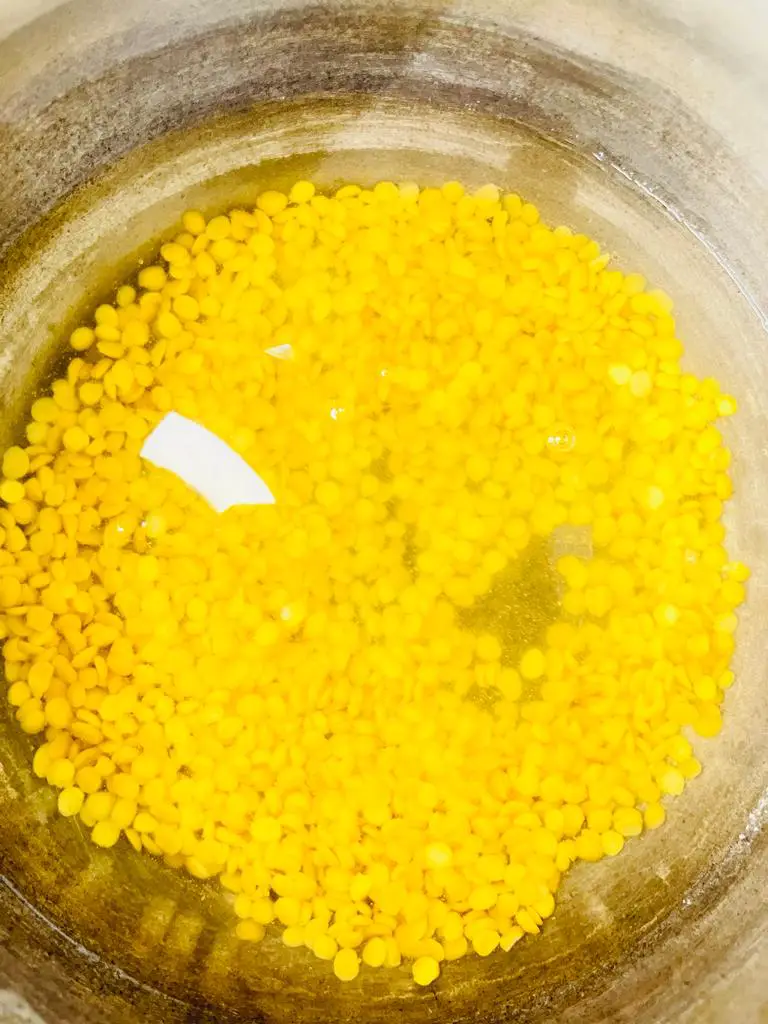
- Now add 1/2 teaspoon salt.
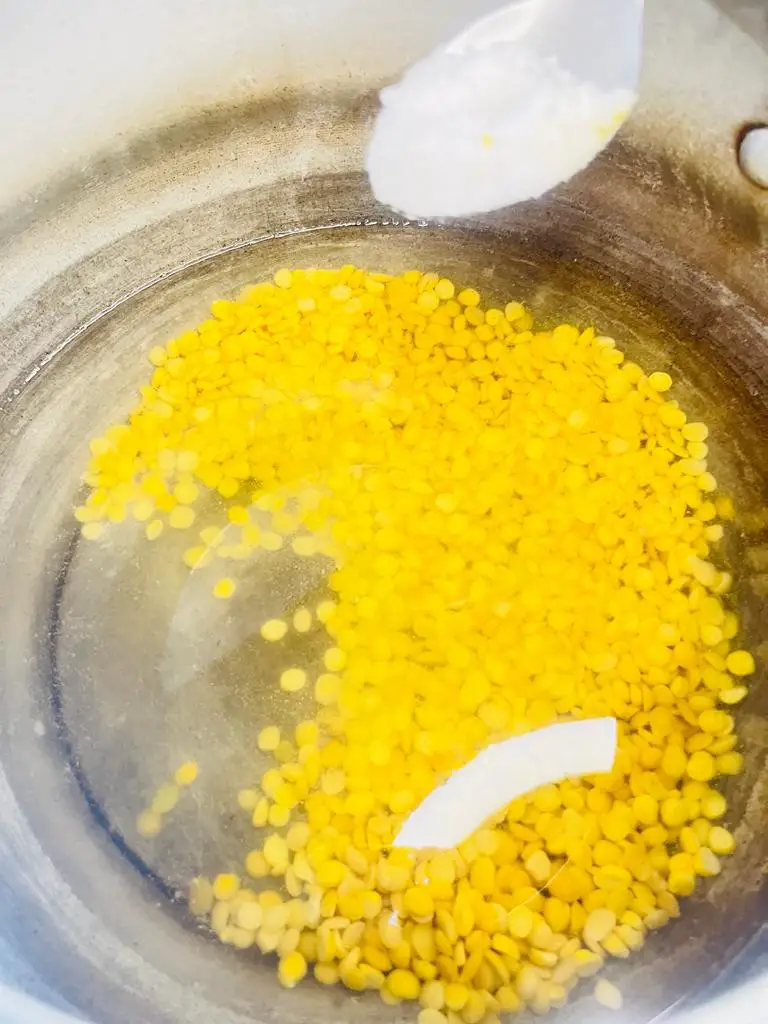
- Add 1/4 teaspoon turmeric powder.
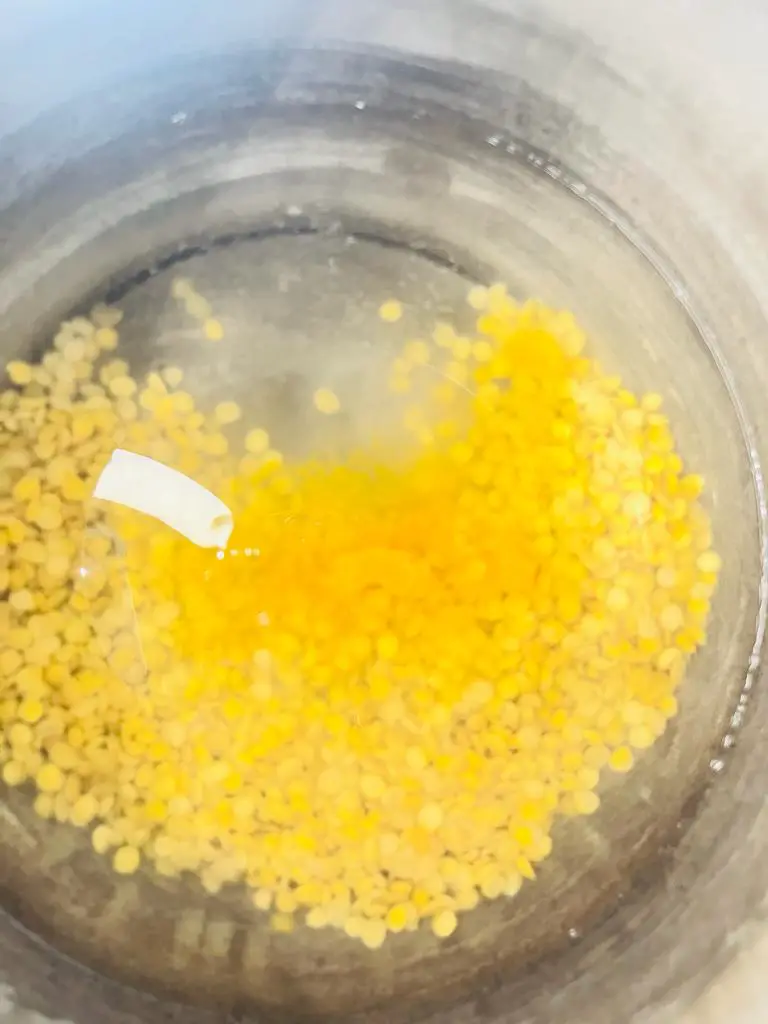
- Now cover it with lid and cook. Boil it until 3 whistles come.
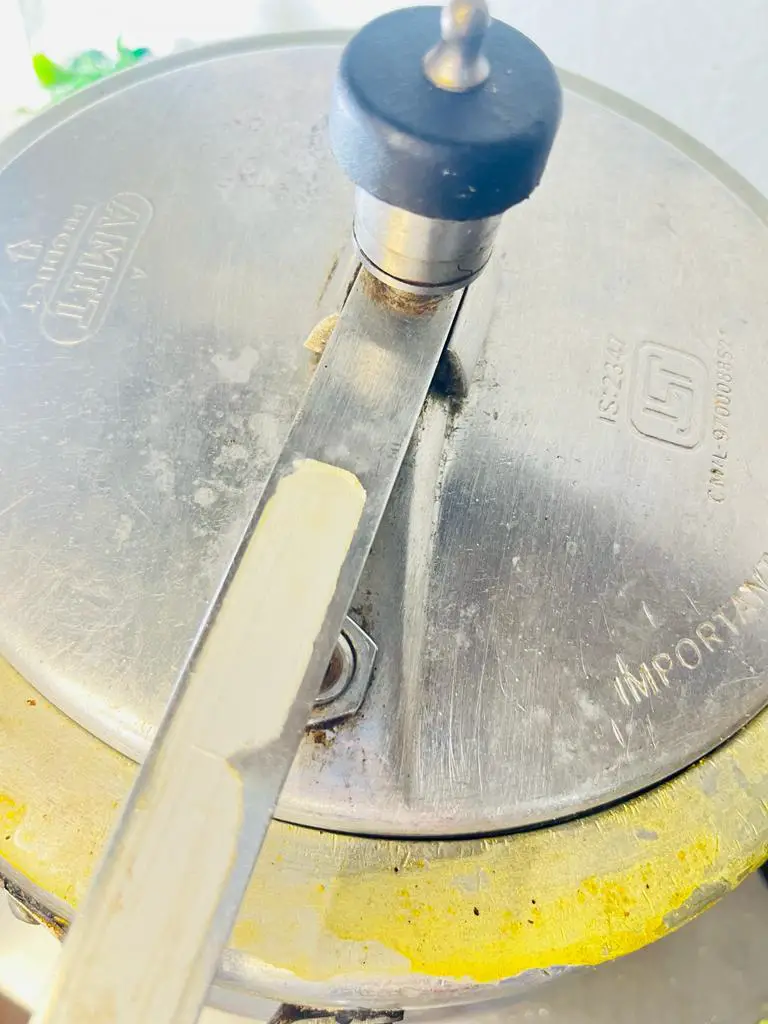
- Meanwhile take a kadai, heat 2 tablespoon oil and add 1 teaspoon mustard seeds.

- After mustard seeds splitter then append 1/2 teaspoon methi dana in it.
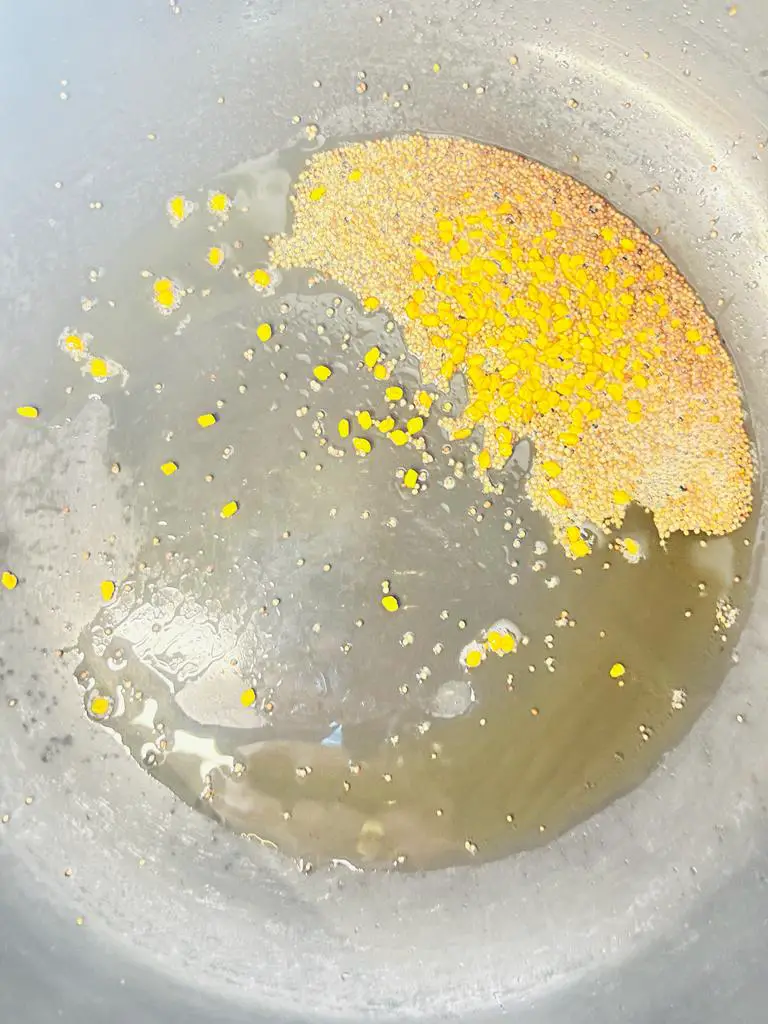
- Now add 5-6 dry red chilies and 1 green chili small sliced.

- Add 10-12 curry leaves.

- Put 1 medium sized onion (sliced). Cook until 2-3 minutes and make sure that color of onion converts to pinkish not golden-brown.
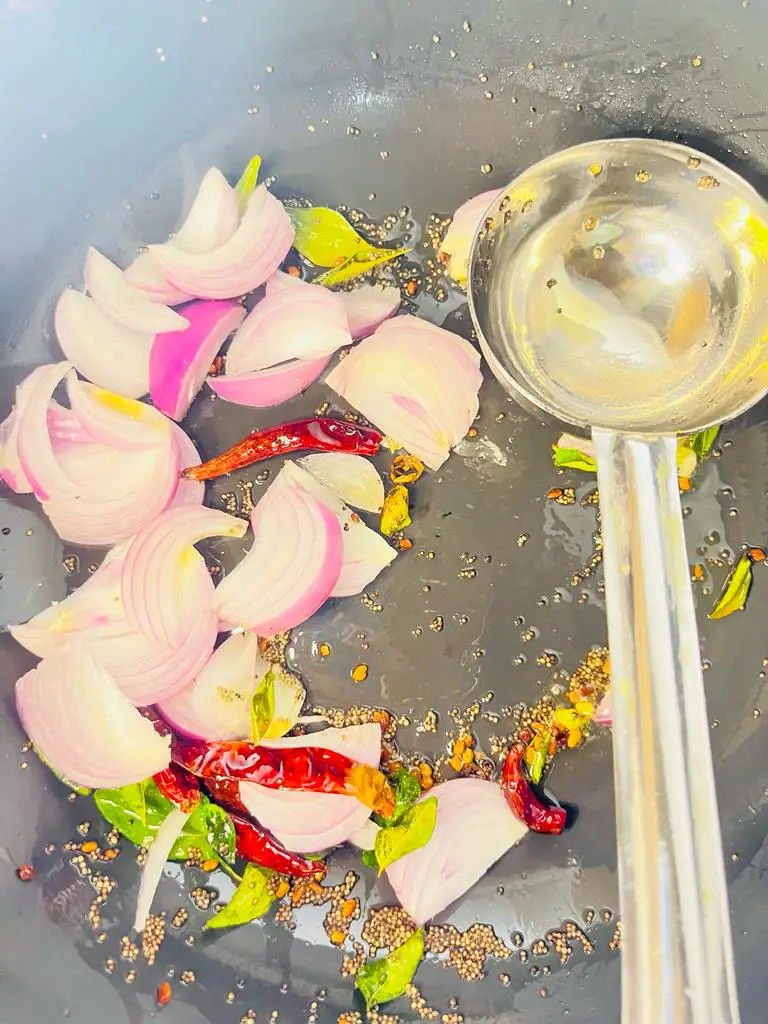
- Append 1 medium sized tomato (sliced). It will help to make gravy tangy and gives a good color & texture.

- Now add 1 cup carrot, 1 cup ash gourd, 1 cup eggplant and cook for 2 minutes.
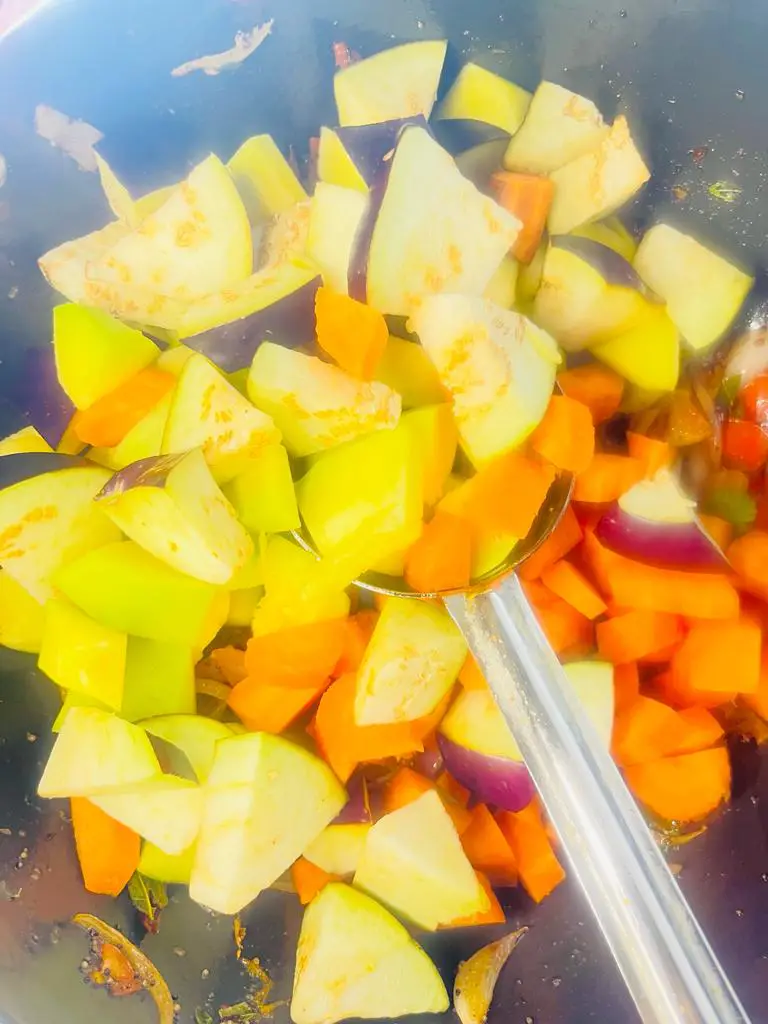
- Sprinkle 1/2 teaspoon salt in it.
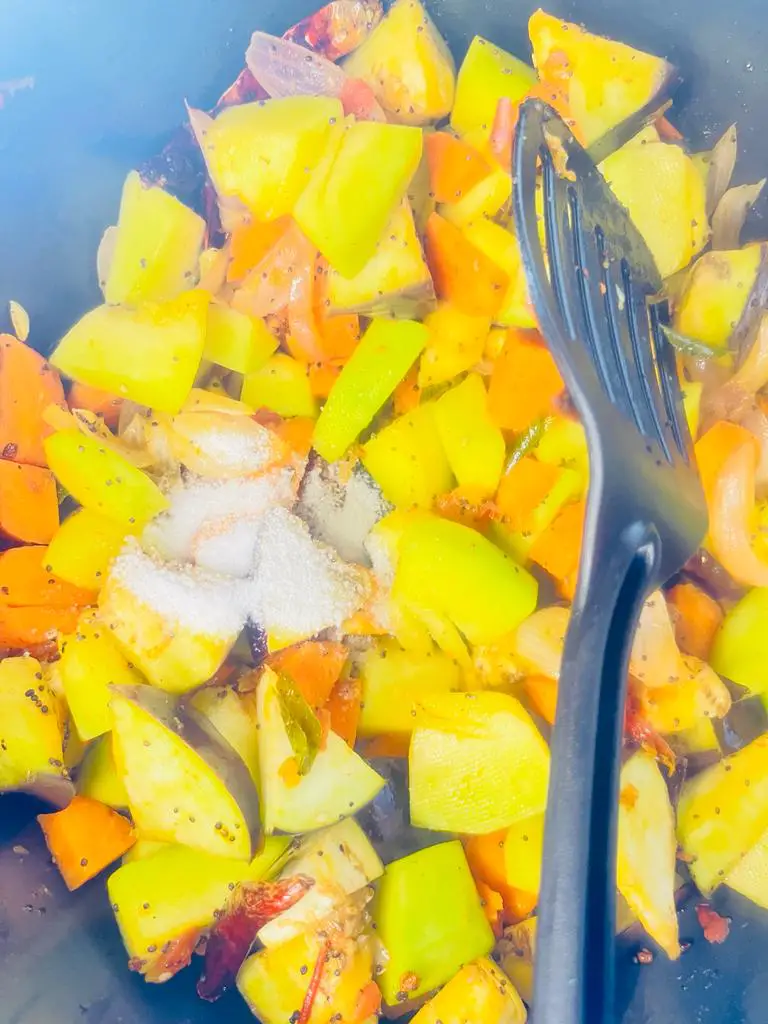
- Add 1/2 teaspoon kashmiri red chili powder & 2 teaspoon sambar masala.
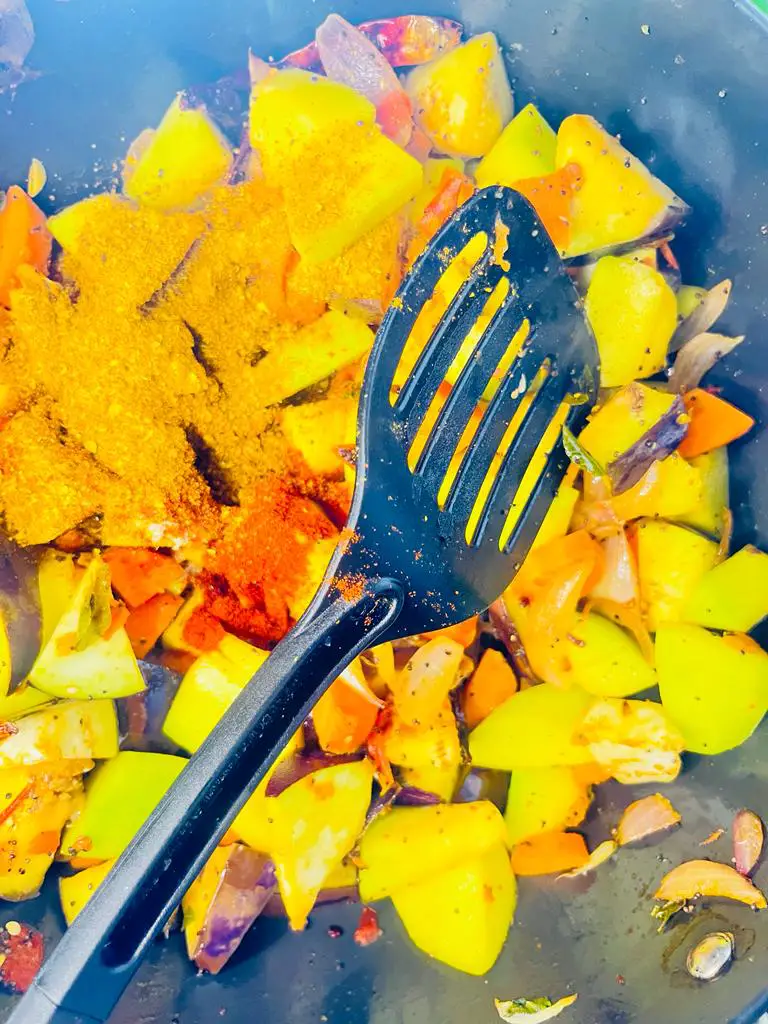
- Mix it well so that all the spices get mixed with vegetables.

- Pour 4-5 teaspoon taramind pulp.
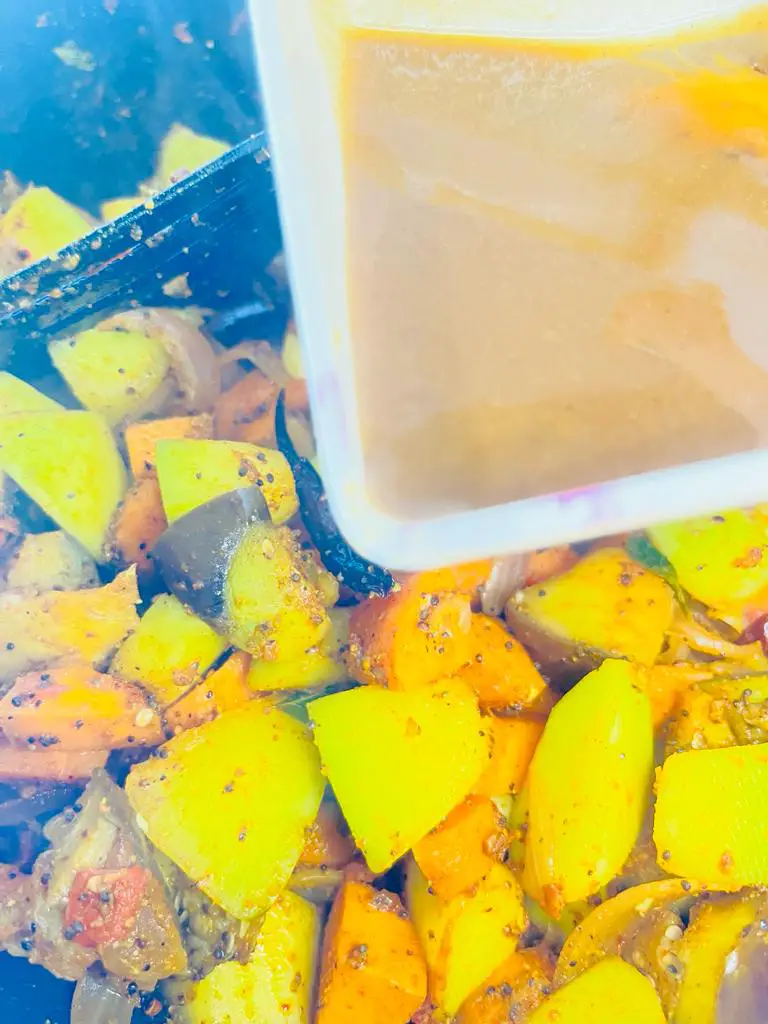
- Add 1.5 cup water.
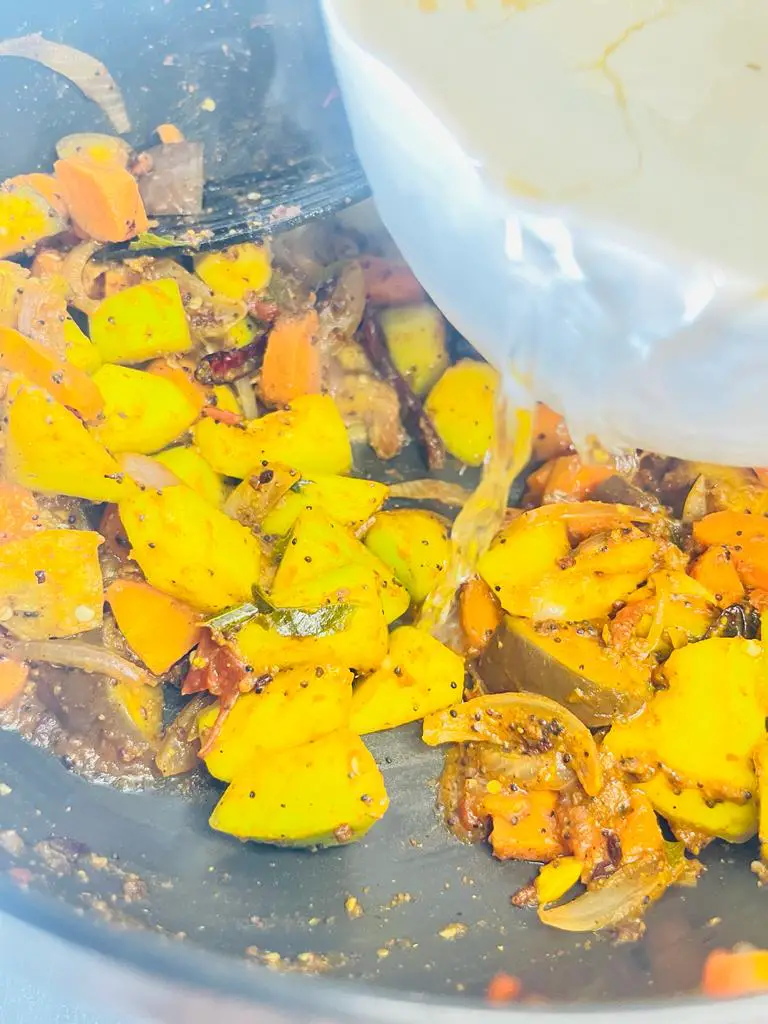
- Again mix it well.
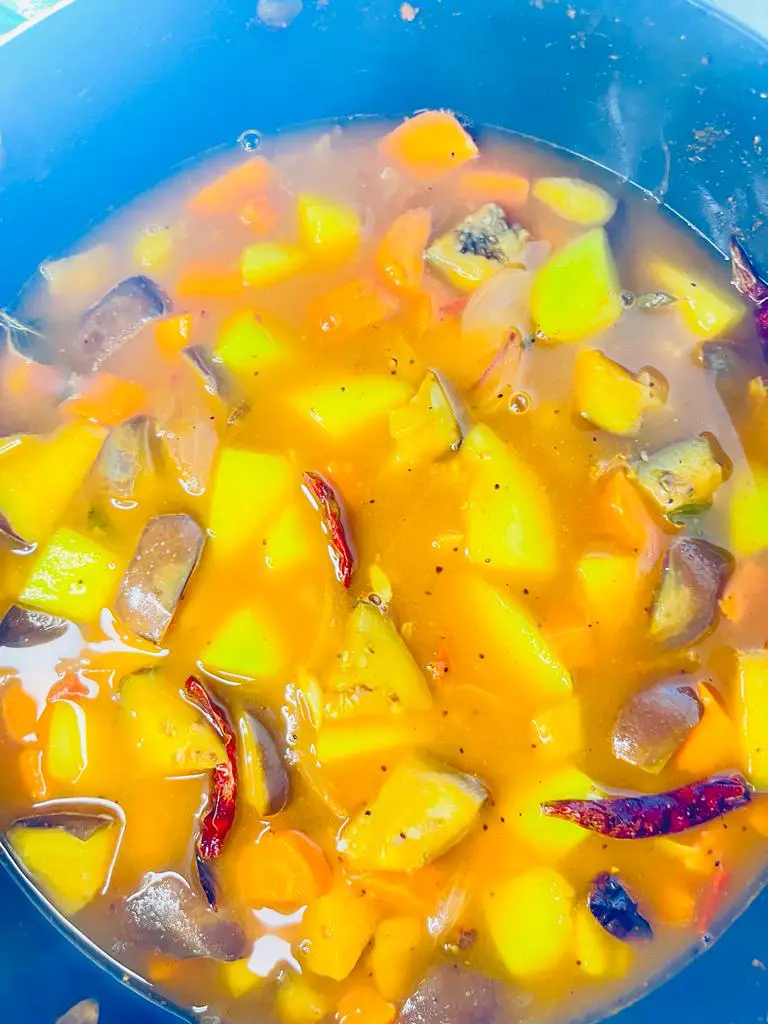
- Cover it with lid and cook for 3-4 minutes on low-medium flame.
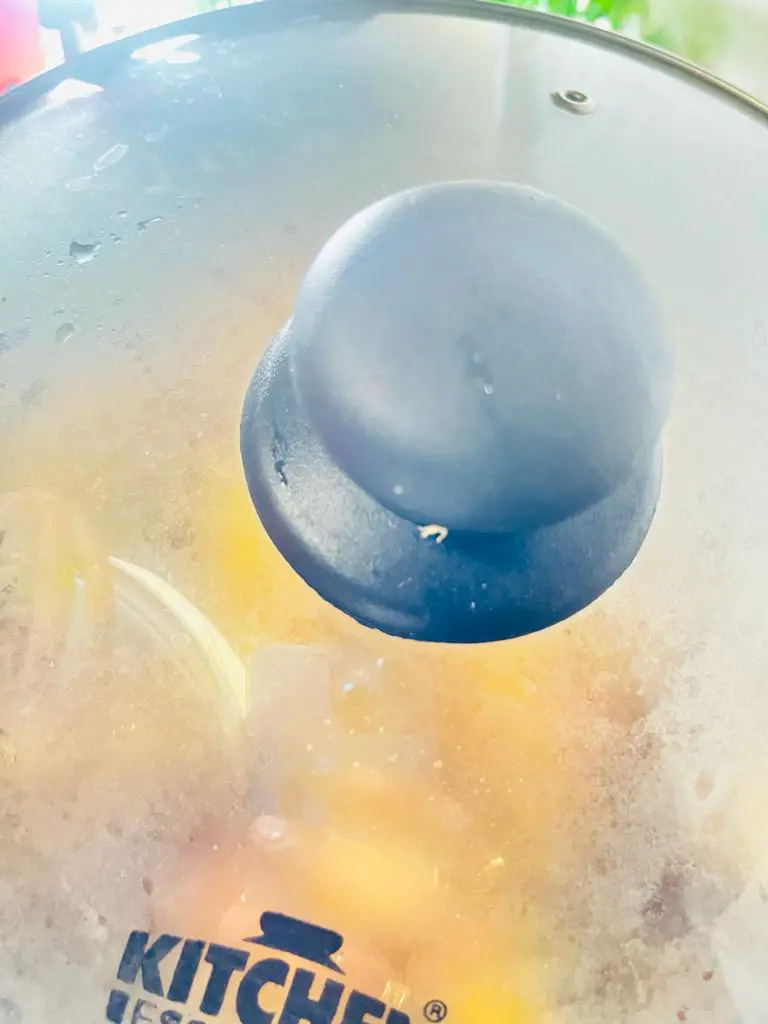
- Now check dal in pressure cooker if the pressure has gone. It can be check with the whistle on it. Then mash dal with madani or whisker.
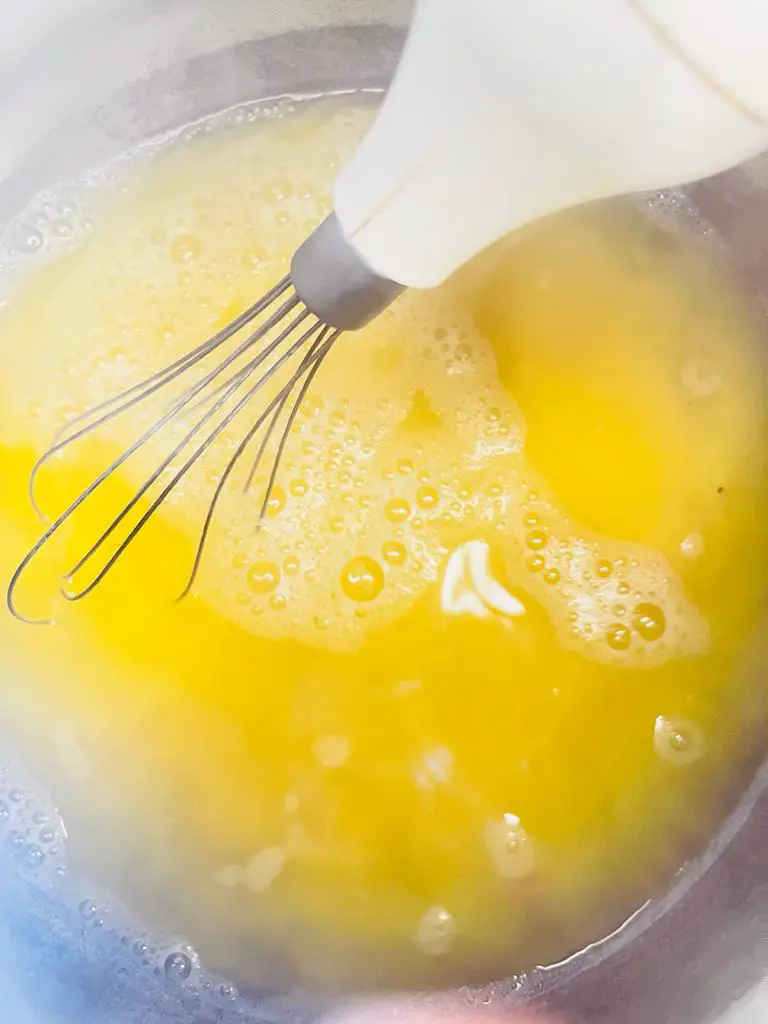
- Afterwards check the vegetables in kadai if they cook and add 1/2 sliced onion in it.
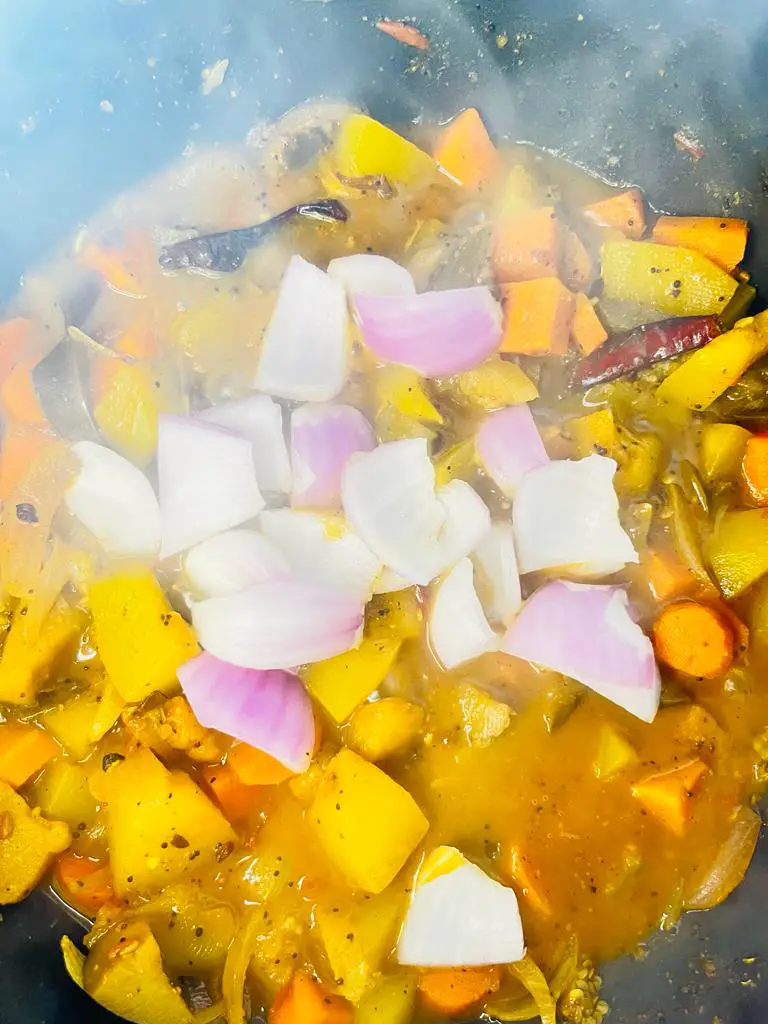
- Append 1small piece of jaggery.

- Cook it for 1 minute.
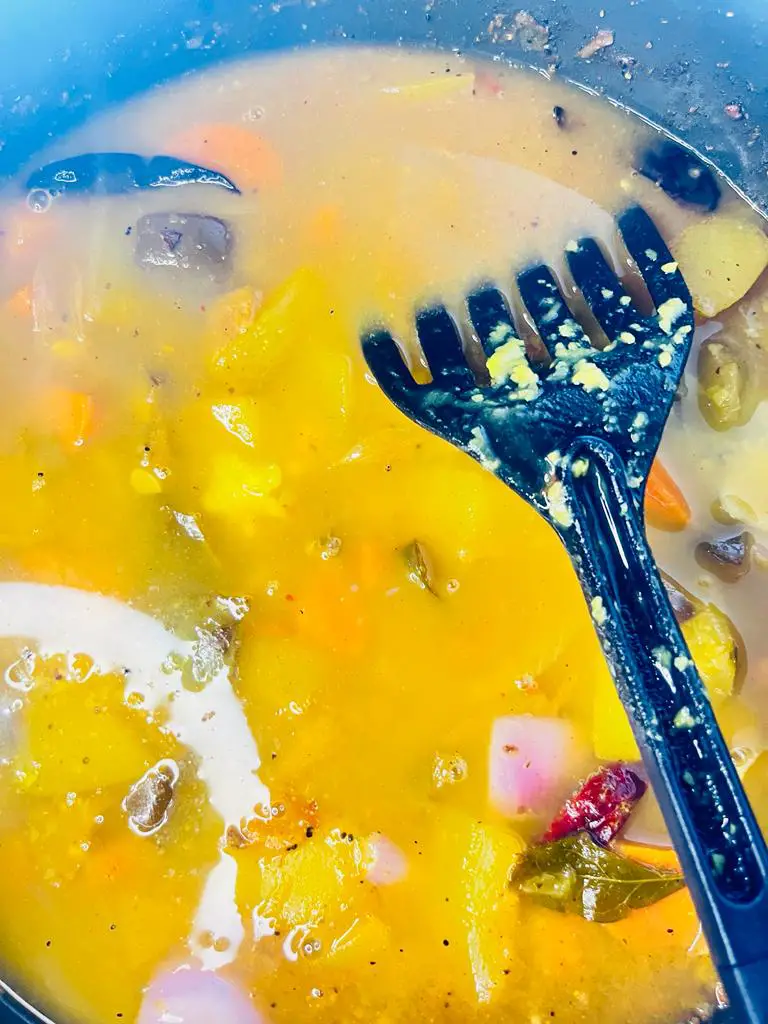
- Now add cooked toor dal in it and cook till 2-3 boils come. Don’t over cook the vegetables otherwise they will get meshy and the taste will get some bitter.
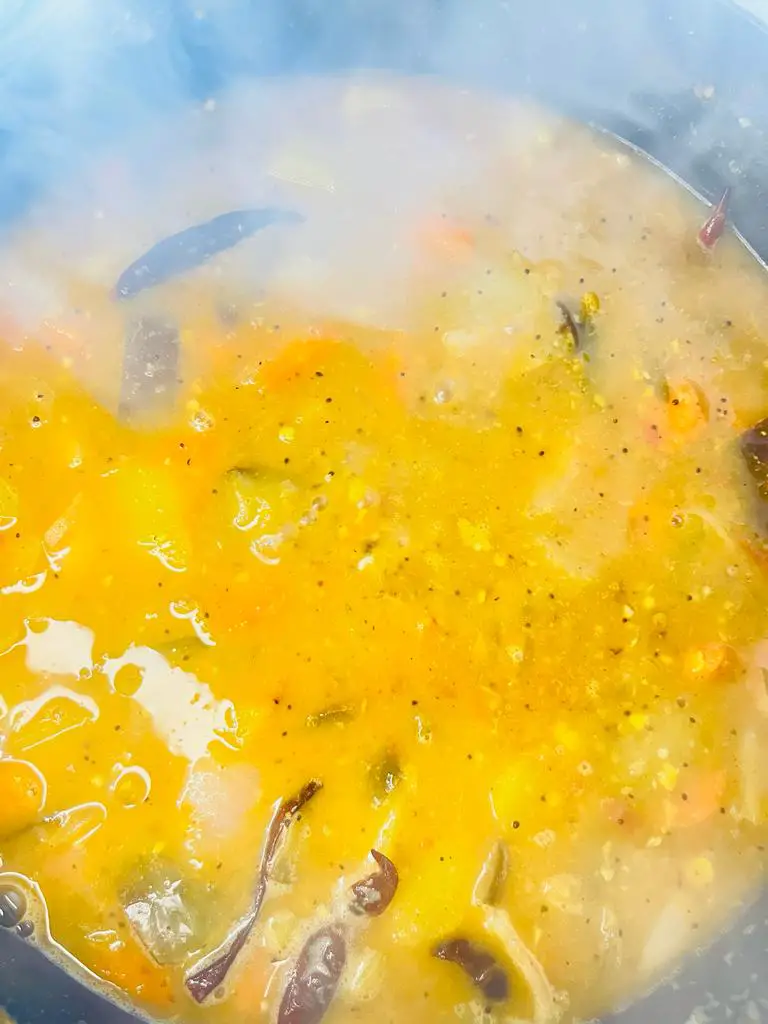
- Your tasty and unique Sambar is ready to serve.

Consistency: Sambar can be thick or thin, depending on your preference. You can adjust the consistency by adding more water if needed.
Serve Hot: Sambar is best enjoyed hot with steamed rice, dosa, rava idli, or vada.
Leftovers: Sambar often tastes even better the next day as the flavors have had time to meld.
Expert Tips
Quality of Ingredients: Always use fresh and high-quality ingredients for the best results. Fresh vegetables, good quality lentils, and flavorful spices will greatly enhance the taste of your sambar.
Tamarind Extraction: To extract tamarind pulp effectively, soak the tamarind in warm water for about 15-20 minutes. Squeeze and mix it well to get a concentrated tamarind extract. Discard the solids.
Tempering Technique: Mastering the tempering (tadka) technique is crucial for authentic sambar. Heat the oil or ghee until it’s hot but not smoking, then add mustard seeds and cumin seeds. Let them splutter for the best flavor infusion.
Roasting Spices: If you have the time, consider roasting whole spices like coriander seeds, cumin seeds, and fenugreek seeds before grinding them into sambar powder. This extra step adds depth and complexity to the spice blend.
Balancing Flavors: Achieving the perfect balance of flavors is key. Start with a small amount of tamarind pulp and sambar powder, and gradually adjust to your taste. Remember that the tanginess of tamarind should complement the spiciness of the sambar powder.
Layering Vegetables: Not all vegetables cook at the same rate. Add harder vegetables like carrots and pumpkin first, followed by quicker-cooking vegetables like tomatoes and spinach. This ensures all the vegetables are perfectly cooked.
Mash the Lentils: After cooking the lentils, make sure to thoroughly mash them. A smooth consistency will help thicken the sambar and create a cohesive texture.
Curry Leaves: Fresh curry leaves add a distinct aroma to the sambar. Add them during the tempering stage for maximum fragrance.
FAQs
Q. What is sambar?
A. Sambar is a traditional South Indian dish made with lentils, vegetables, tamarind, and a blend of spices. It’s a flavorful and hearty stew often served with rice, idli, dosa, or vada.
Q. What kind of lentils are used in sambar?
A. Toor dal, also known as pigeon pea lentils, is the most commonly used lentil variety in sambar. It gives the dish a creamy texture and a rich taste.
Q. Can I use other lentils instead of toor dal?
A. While toor dal is traditional, you can experiment with other lentils like masoor dal (red lentils) or moong dal (split yellow lentils) for variations in flavor and texture.
Q. What vegetables can I use in sambar?
A. Common vegetables used in sambar include drumsticks, carrots, eggplant, okra, pumpkin, and potatoes. You can use a combination of these or other vegetables based on your preferences.
Q. How do I adjust the spiciness of sambar?
A. The spiciness of sambar can be adjusted by controlling the amount of red chilies in the sambar powder. You can also add or reduce green chilies according to your spice tolerance.
Q. Can I make sambar without tamarind?
A. Yes, you can substitute tamarind with tomatoes to achieve a tangy flavor in the sambar. However, tamarind provides a unique tanginess that’s characteristic of traditional sambar.
Q. Is sambar powder readily available or can I make it at home?
A. You can find ready-made sambar powder in stores, but making it at home allows you to customize the flavor. Roast and grind coriander seeds, cumin seeds, fenugreek seeds, dried red chilies, and other spices for a fresh and aromatic blend.
Enjoyed this recipe? Then Try our Other Delicious Similar Recipes
Please be sure to rate this recipe or leave a comment below if you have made it. For more vegetarian & non – vegetarian inspirations, Sign Up for my emails or follow me on Instagram, Youtube, Facebook, Pinterest or Twitter.
Indian Sambar Recipe Card
Equipments
Ingredients
- 150 gm Toor Dal
- 1 teaspoon Salt
- ¼ teaspoon Turmeric powder (Haldi)
- 2 tablespoons Oil
- 1 teaspoon Mustard seeds
- ½ teaspoon Methi dana
- 5-6 Dry Red Chillies
- 1 Green Chili
- 10-12 Curry leaves
- 1½ medium-sized Onion
- 1 medium-sized Tomato
- 1 cup Carrot
- 1 cup Ash Gourd
- 1 cup Eggplant
- ½ teaspoon Kashmiri Red Chili powder
- 2 teaspoon Sambar masala
- 4-5 teaspoon Taramind pulp
- 1½ cup Water
- 1 Jaggery
Instructions
- Soak 150gm toor dal in water for.2. Transfer dal pressure cooker for boil. Add water as per required.3. Now add 1/2 teaspoon salt.4. Add 1/4 teaspoon turmeric powder.5. Now cover it with lid and cook. Boil it until 3 whistles come.6. Meanwhile take a kadai, heat 2 tablespoon oil and add 1teaspoon mustard seeds.7. After mustard seeds splitter then append 1/2 teaspoon methi dana in it.8. Now add 5-6 dry red chilies and 1 green chili small sliced.9. Add 10-12 curry leaves.10. Put 1 medium sized onion (sliced). Cook until 2-3 minutes and make sure that color of onion converts to pinkish not golden-brown.11. Append 1 medium sized tomato (sliced). It will help to make gravy tangy and gives a good color & texture.12. Now add 1 cup carrot, 1 cup ash gourd, 1 cup eggplant and cook for 2 minutes.13. Sprinkle 1/2 teaspoon salt in it.14. Add 1/2 teaspoon kashmiri red chili powder & 2 teaspoon sambar masala.15. Mix it well so that all the spices get mixed with vegetables.16. Pour 4-5 teaspoon taramind pulp.17. Add 1.5 cup water.18. Again mix it well.19. Cover it with lid and cook for 3-4 minutes on low-medium flame.20. Now check dal in pressure cooker if the pressure has gone. It can be check with the whistle on it. Then mash dal with madani or whisker.21. Afterwards check the vegetables in kadai if they cook and add 1/2 sliced onion in it.22. Append 1 small piece of jaggery.23. Cook it for 1 minute.24. Now add cooked toor dal in it and cook till 2-3 boils come. Don't over cook the vegetables otherwise they will get meshy and the taste will get some bitter. Your Yummy Sambar is ready
Video
Notes
- Customization: You can add a spoonful of grated coconut or a small piece of jaggery to balance the flavors. Some regions even use a little grated raw mango for extra tanginess.
- Consistency Control: If your sambar becomes too thick, you can add hot water to achieve the desired consistency. If it's too thin, let it simmer uncovered for a while.
